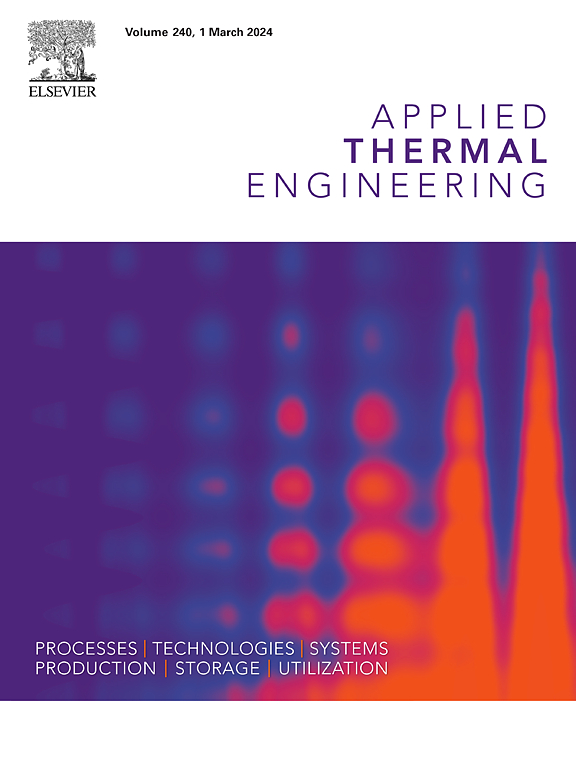微纳气泡预混燃料液滴撞击受热表面的动力学行为及蒸发特性
IF 6.1
2区 工程技术
Q2 ENERGY & FUELS
引用次数: 0
摘要
为了解微纳气泡预混燃料(MBPF)与普通柴油的区别,通过多孔膜管在柴油中加入微纳气泡制备了MBPF。采用高速摄影和纹影摄影两种方法对MBPF液滴撞击铝合金壁面后的动力学行为和蒸发过程进行了实验研究。结果表明:微纳气泡的加入降低了液滴的运动粘度,减弱了液滴撞击壁面后扩散过程的粘滞阻力,导致扩散系数和扩散速率增大;此外,热量从固体壁面传递到MBPF液滴,在MBPF液滴中气泡膨胀并向上漂浮,直到最终突破液滴上部的表面张力而破裂。这导致MBPF液滴在受热表面蒸发时微爆炸显著增加,具有比普通柴油更大的扩散宽度和扩散面积。同时,随着MBPF内气泡浓度的增加,扩散宽度和扩散面积进一步增大,有效地加快了蒸发速率。本文章由计算机程序翻译,如有差异,请以英文原文为准。
Dynamic behavior and evaporation characteristics of micro-nano bubble premixed fuel droplets impacting on the heated surface
To understand the differences between micro-nano bubble premixed fuel (MBPF) and ordinary diesel, MBPF is prepared by adding micro-nano air bubbles to diesel through the porous membrane tube. The dynamic behavior and evaporation process of MBPF droplets after impacting aluminum alloy walls are experimentally studied using high-speed photography and schlieren photography methods. The results show that the incorporation of micro-nano bubbles reduces the kinematic viscosity of droplets and weakens the viscous resistance of the spreading process after hitting the wall, leading to an enlarged spreading factor and spreading rate. In addition, heat is transferred from the solid wall to the MBPF droplet, where the bubble expands and floats upward until it eventually breaks through the surface tension in the upper part of the droplet and bursts. This leads to a significant increase in the micro-explosion of the MBPF droplet as it evaporates on the heated surface, which has a larger diffusion width and diffusion area than ordinary diesel. Meanwhile, the diffusion width and diffusion area will be further augmented when the bubble concentration in the MBPF increases, which effectively accelerates the evaporation rate.
求助全文
通过发布文献求助,成功后即可免费获取论文全文。
去求助
来源期刊

Applied Thermal Engineering
工程技术-工程:机械
CiteScore
11.30
自引率
15.60%
发文量
1474
审稿时长
57 days
期刊介绍:
Applied Thermal Engineering disseminates novel research related to the design, development and demonstration of components, devices, equipment, technologies and systems involving thermal processes for the production, storage, utilization and conservation of energy, with a focus on engineering application.
The journal publishes high-quality and high-impact Original Research Articles, Review Articles, Short Communications and Letters to the Editor on cutting-edge innovations in research, and recent advances or issues of interest to the thermal engineering community.
 求助内容:
求助内容: 应助结果提醒方式:
应助结果提醒方式:


